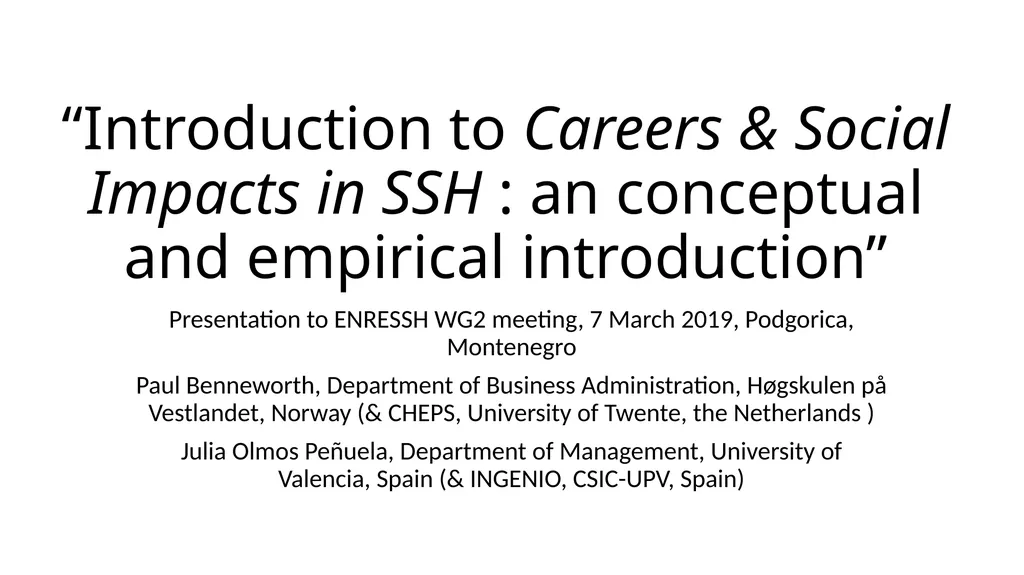
“Introduction to Careers & Social Impacts in SSH :
Author: lindy-dunigan | Published: 2025-06-27
Description: Introduction to Careers Social Impacts in SSH : an conceptual and empirical introduction Presentation to ENRESSH WG2 meeting, 7 March 2019, Podgorica, Montenegro Paul Benneworth, Department of Business Administration, Høgskulen på
Download Presentation
Download the PPT/PDF: Download
Transcript:
Loading transcript�